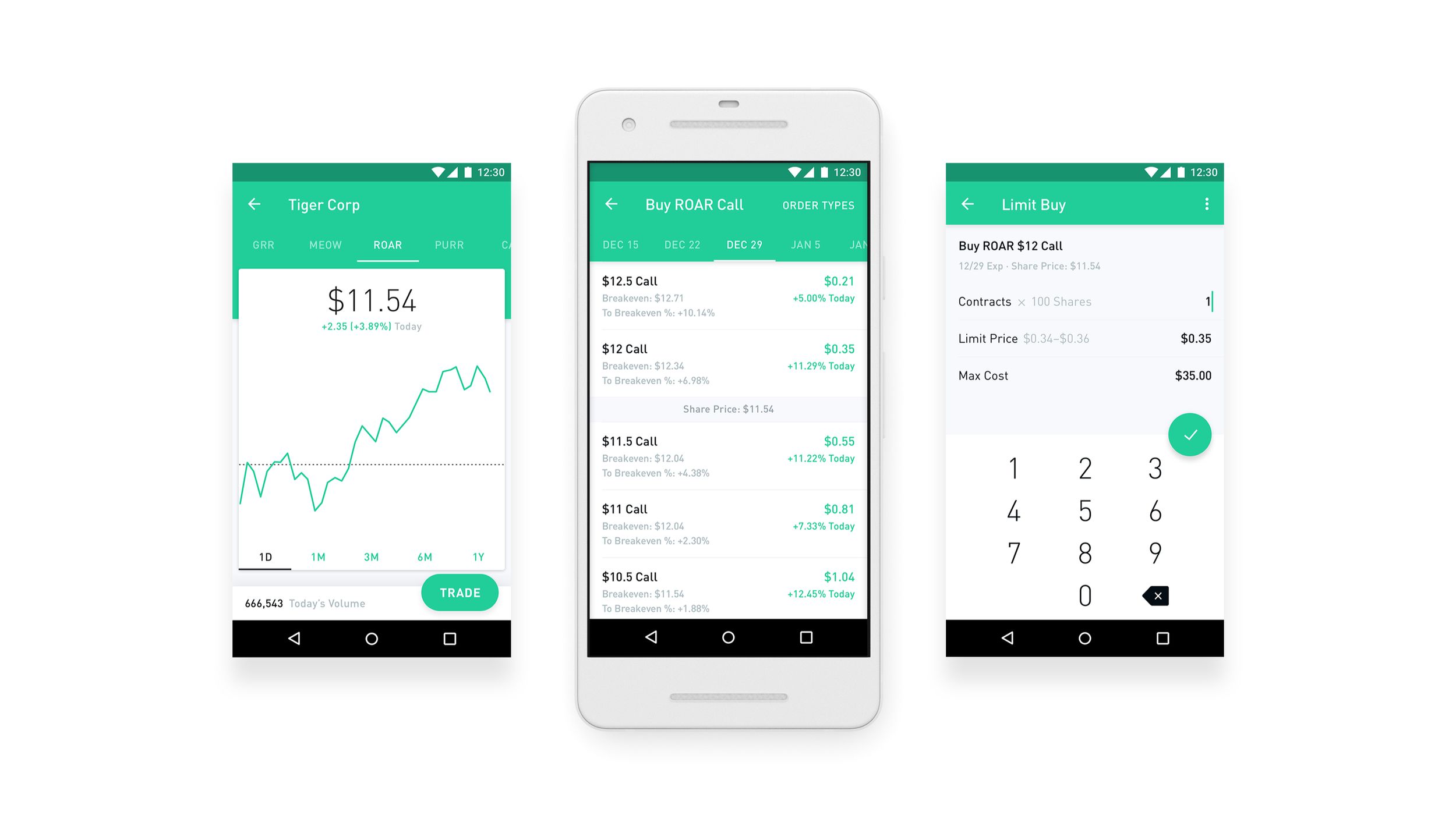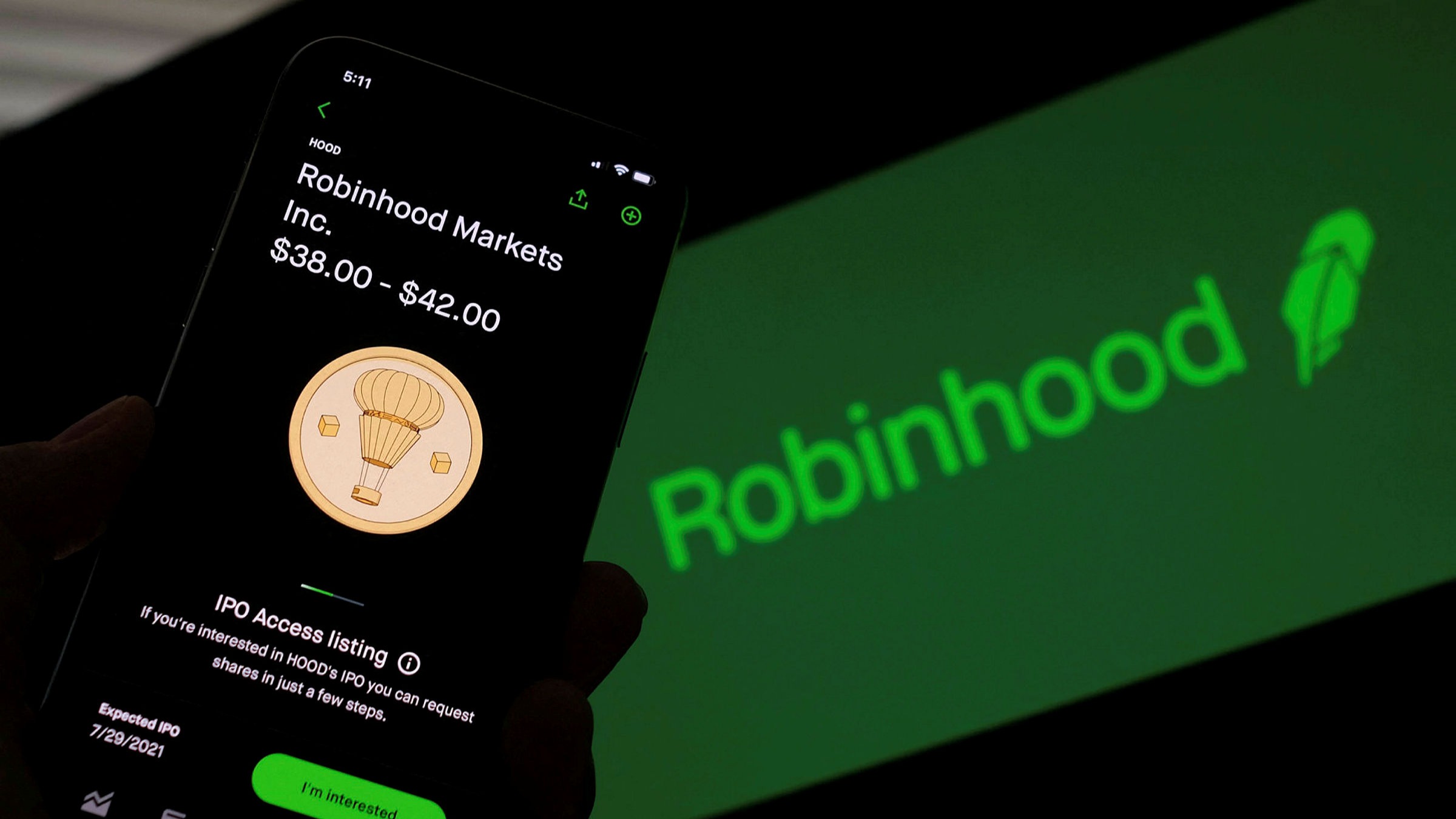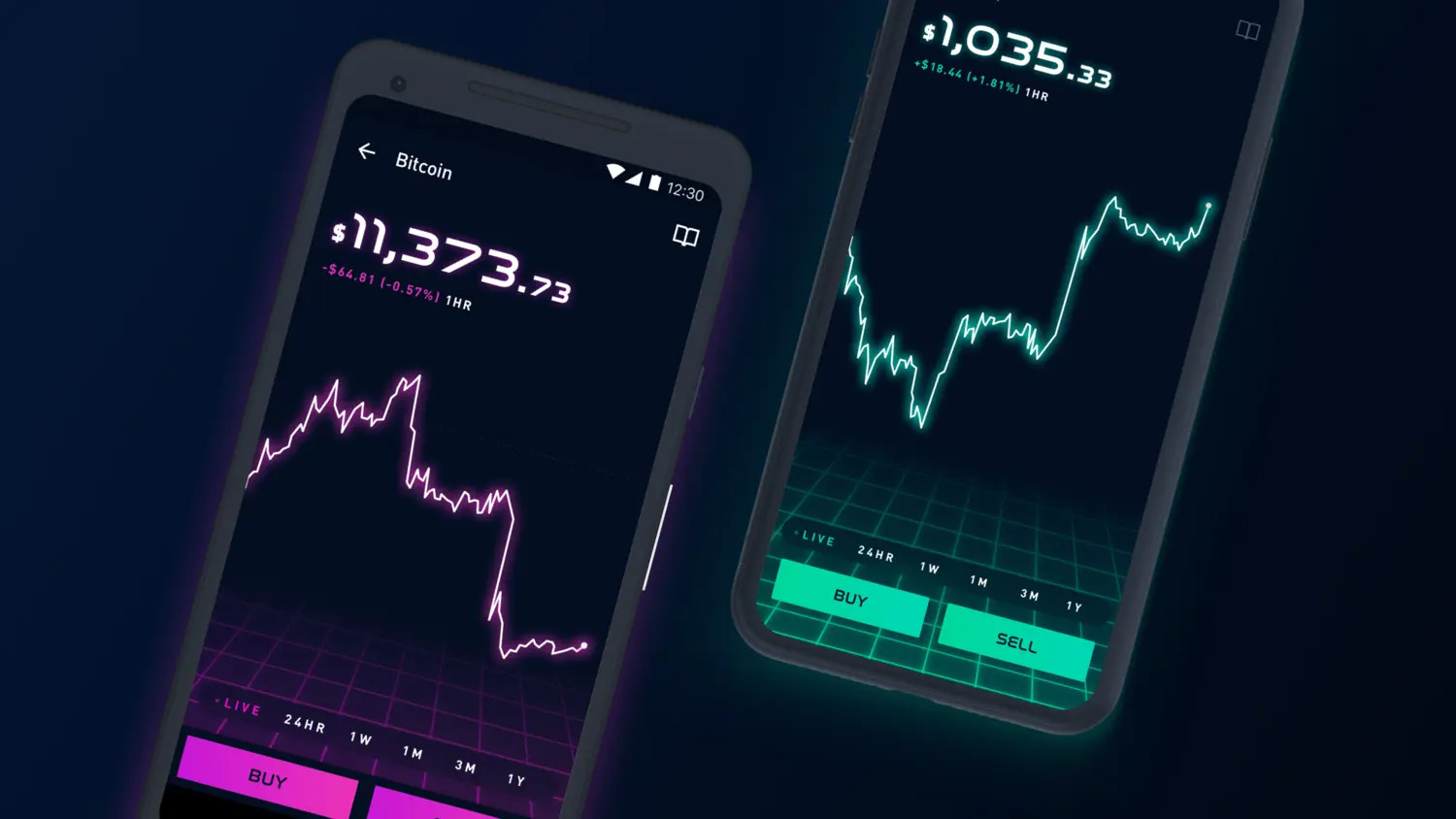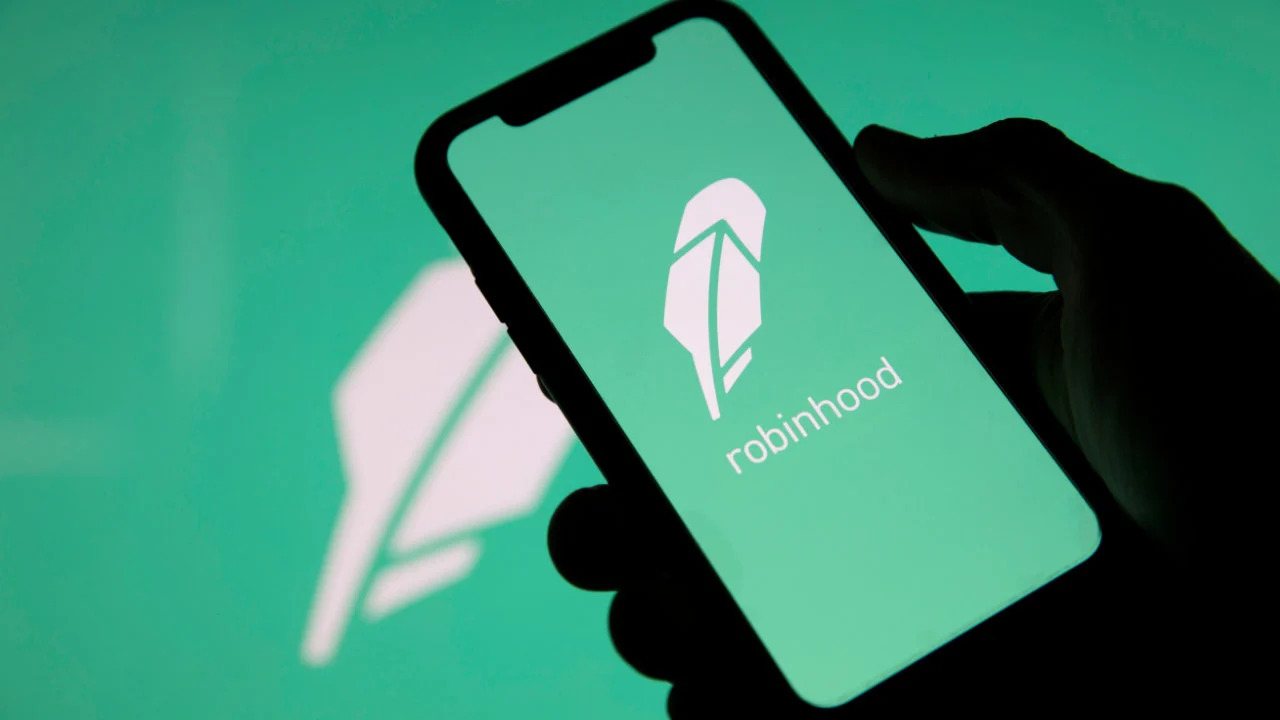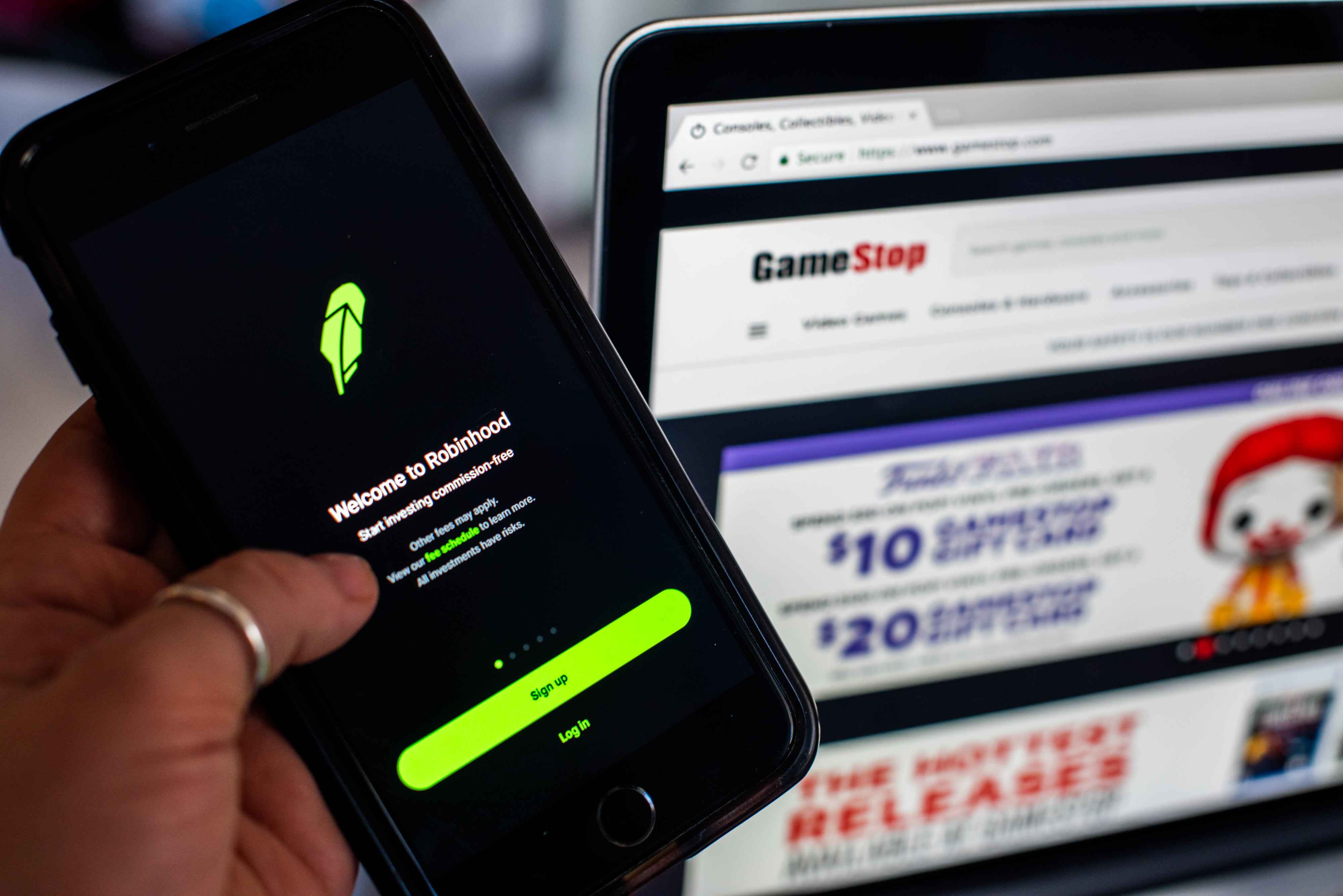Introduction
Welcome to the exciting world of option trading on Robinhood! If you’re interested in exploring different investment strategies and potentially maximizing your profits, option trading can be a great avenue to consider. In this article, we will delve into the basics of option trading and how you can execute trades using the Robinhood platform.
Option trading involves buying and selling contracts that give you the right, but not the obligation, to buy or sell an underlying asset at a specific price within a certain timeframe. It provides investors with a flexible way to speculate on the movement of stock prices, hedge against market downturns, and generate income.
Robinhood, a popular commission-free trading platform, allows you to trade options alongside stocks, ETFs, and cryptocurrencies. The platform provides a user-friendly interface that makes it accessible to beginners while offering advanced tools and features for experienced traders.
Before diving into option trading on Robinhood, it’s important to set up an account. The process is simple and straightforward. All you need is to download the Robinhood app on your mobile device, follow the account setup instructions, and fund your account.
Now, let’s explore the key terminologies associated with options and understand the different types of options available for trading on the Robinhood platform.
What is Option Trading?
Option trading is a financial derivative strategy that involves buying or selling contracts, known as options, based on an underlying asset such as stocks, commodities, or indices. These contracts give traders the right, but not the obligation, to buy (call option) or sell (put option) the underlying asset at a specific price, known as the strike price, within a certain timeframe, known as the expiration date.
The primary objective of option trading is to profit from changes in the price of the underlying asset. Traders can speculate on whether the price will rise or fall, and accordingly, they can buy or sell options to take advantage of these price movements.
There are two main types of options: calls and puts. A call option gives the holder the right to buy the underlying asset at the strike price, while a put option gives the holder the right to sell the underlying asset at the strike price. Traders can purchase options as standalone trades or as part of more complex strategies, such as spreads, straddles, or combinations.
Option trading provides several advantages. First and foremost, it offers leverage, allowing traders to control a larger position with a smaller amount of capital. This potentially amplifies profits if the trade goes in the desired direction. Secondly, options provide flexibility and versatility as they can be used for various purposes, including speculation, hedging, and income generation. Additionally, options can be traded on a wide range of assets, providing ample opportunities for diversification.
However, option trading also comes with risks. The value of options is impacted not only by the movement of the underlying asset but also by factors such as time decay and implied volatility. Options can expire worthless, resulting in a complete loss of the premium paid. Therefore, it’s crucial to have a solid understanding of option trading strategies, risk management techniques, and market conditions before participating in this type of trading.
Now that we have a basic understanding of option trading, let’s explore how you can participate in this exciting financial market using the Robinhood platform.
What is Robinhood?
Robinhood is a popular commission-free trading platform that has revolutionized the way individuals invest in the stock market. Launched in 2013, Robinhood aims to make investing more accessible to everyone by eliminating trading commissions and offering a simple and intuitive user interface.
With Robinhood, you can trade a variety of financial instruments, including stocks, ETFs (Exchange-Traded Funds), options, and cryptocurrencies. The platform is known for its user-friendly mobile app, which allows investors to trade on the go and access real-time market data at their fingertips.
One of the key features that sets Robinhood apart is its commission-free model. Unlike traditional brokerage firms that charge per trade, Robinhood allows you to buy and sell securities without incurring any commission fees. This is particularly advantageous for frequent traders or those starting with a limited investment budget.
Robinhood also offers a simple and streamlined account setup process. To get started, you can download the Robinhood app on your iOS or Android device and follow the instructions to create an account. You will need to provide basic personal information and undergo a quick verification process. Once your account is set up, you can link your bank account to easily fund your trading activities.
Additionally, Robinhood provides a range of tools and features designed to enhance your trading experience. The platform offers real-time market data, customizable watchlists, and intuitive charting tools to help you make informed investment decisions. It also provides access to research reports and news articles to keep you updated on the latest market trends and developments.
It’s worth noting that while Robinhood offers commission-free trading, it generates revenue through other means, such as interest on cash balances and margin lending. Robinhood also offers a premium subscription service called Robinhood Gold, which provides additional benefits like extended trading hours and access to margin trading for a monthly fee.
In summary, Robinhood is a commission-free trading platform that aims to democratize investing by making it accessible, affordable, and convenient for individuals of all experience levels. With its user-friendly interface, wide range of tradable assets, and innovative features, Robinhood has become a popular choice for many investors seeking to participate in the financial markets.
Setting Up a Robinhood Account
To start trading options on Robinhood, you’ll first need to set up an account on the platform. Here’s a step-by-step guide to help you get started:
- Download the Robinhood app: Visit the App Store or Google Play Store on your mobile device and search for the Robinhood app. Download and install the app to your device.
- Create an account: Launch the Robinhood app and click on the “Sign Up” button. Follow the prompts to enter your personal information, including your name, email address, and desired password. Make sure to use a strong and secure password.
- Provide additional details: Once you’ve created an account, you’ll need to provide some additional information, including your Social Security number (SSN) or individual taxpayer identification number (ITIN). This information is required to comply with regulatory requirements and to verify your identity.
- Verify your email: After providing the necessary information, you’ll receive an email from Robinhood with a verification link. Click on the link to verify your email address and activate your account.
- Link your bank account: To fund your Robinhood account, you’ll need to link your bank account. Robinhood supports most major US banks. Follow the instructions in the app to securely link your bank account.
- Enable two-factor authentication: To enhance the security of your Robinhood account, it’s recommended to enable two-factor authentication. This adds an extra layer of protection by requiring a verification code in addition to your password when logging in.
Once you’ve completed these steps, you’ll have successfully set up your Robinhood account. Before you start trading options, it’s essential to familiarize yourself with the platform’s features and capabilities. Take some time to explore the different sections of the app, such as the Watchlist, Account, and Trade tabs, to get a better understanding of how everything works.
It’s also worth mentioning that while Robinhood offers a user-friendly mobile app, the company also provides a web-based platform. You can access your Robinhood account and trade options through a web browser on your computer by visiting the Robinhood website.
Now that you have your Robinhood account set up, it’s time to dive into the world of options trading and learn about the terminology and concepts associated with this exciting investment strategy.
Understanding Options Terminology
Before diving into options trading on Robinhood, it’s important to familiarize yourself with the key terminology associated with options. Here are some essential terms you should know:
- Call Option: A call option is a contract that gives the holder the right, but not the obligation, to buy an underlying asset at a specified price (strike price) within a specific timeframe (expiration date).
- Put Option: A put option is a contract that gives the holder the right, but not the obligation, to sell an underlying asset at a specified price (strike price) within a specific timeframe (expiration date).
- Strike Price: The strike price, also known as the exercise price, is the predetermined price at which the underlying asset can be bought or sold when exercising the option.
- Expiration Date: The expiration date is the date on which the option contract expires. After this date, the option becomes worthless and cannot be exercised.
- Premium: The premium is the price paid by the buyer (holder) to the seller (writer) of the option contract. It represents the cost of obtaining the rights conferred by the option.
- In the Money: An option is considered “in the money” if exercising it would result in a profit. For a call option, this means the current price of the underlying asset is higher than the strike price. For a put option, it means the current price is lower than the strike price.
- Out of the Money: An option is considered “out of the money” if exercising it would result in a loss. For a call option, this means the current price is lower than the strike price. For a put option, it means the current price is higher than the strike price.
- At the Money: An option is considered “at the money” when the current price of the underlying asset is equal to the strike price.
- Contract Size: The contract size represents the quantity of the underlying asset that is covered by a single options contract. It varies depending on the asset and is typically specified in terms of shares (for stocks) or units (for ETFs).
- Open Interest: Open interest refers to the total number of outstanding options contracts for a particular strike price and expiration date. It indicates the level of market activity and liquidity for that option.
- Volatility: Volatility is a measure of the magnitude and frequency of price movements in the underlying asset. Higher volatility generally leads to higher option premiums.
Understanding these options terminology will greatly help you navigate the world of options trading on Robinhood. As you gain experience and knowledge, you’ll be able to make more informed investment decisions and execute your trading strategies more effectively.
Now that we have a solid foundation of options terminology, let’s explore the different types of options and their characteristics on Robinhood.
Different Types of Options
Options trading on Robinhood offers you a variety of options to choose from. Let’s explore the different types of options available on the platform:
- Equity Options: Equity options are the most common type of options traded on Robinhood. These options are based on individual stocks or exchange-traded funds (ETFs). They give you the right to buy (call option) or sell (put option) a specific number of shares of the underlying stock or ETF at a predetermined price within a specified timeframe.
- Index Options: Index options are based on a specific stock market index, such as the S&P 500 or the Nasdaq 100. These options allow you to gain exposure to a broader market or specific sector without having to trade individual stocks. They can be used to speculate on the overall direction of the market or hedge existing portfolio positions.
- Weekly Options: In addition to standard monthly options, Robinhood also offers weekly options. These options have a shorter lifespan, typically expiring on a weekly basis. Weekly options provide traders with more frequent opportunities to take advantage of short-term market movements.
- Options on Cryptocurrencies: Robinhood also allows you to trade options on cryptocurrencies like Bitcoin and Ethereum. These options provide you with the opportunity to speculate on the price movements of digital assets without having to own them directly.
- Options Strategies: Robinhood offers a range of options strategies that involve combining multiple options contracts. These strategies include vertical spreads, iron condors, straddles, and many others. These strategies allow you to create more complex trading positions and potentially reduce risk or enhance returns.
Each type of option has its own characteristics and potential uses. It’s important to understand the underlying asset and the factors that can impact its price before trading options based on it. Remember to conduct thorough research and analysis or consult with a financial advisor to ensure that you fully understand the risks and rewards associated with each type of option.
Now that we have a clear understanding of the different types of options available on Robinhood, let’s explore how you can buy options on the platform and participate in the option trading market.
How to Buy Options on Robinhood
Buying options on Robinhood is a straightforward process. Here’s a step-by-step guide on how to buy options using the Robinhood platform:
- Open the Robinhood app: Launch the Robinhood app on your mobile device.
- Search for the desired option: Use the search bar at the top of the screen to find the specific option contract you want to trade. You can search by the underlying stock symbol or the name of the company.
- Review the option details: Once you’ve found the desired option, review the contract details. Make sure to check the strike price, expiration date, and premium of the option.
- Select the number of contracts: Determine the number of option contracts you want to buy. Each contract typically covers 100 shares of the underlying asset. You can adjust the quantity by using the “+” and “-” buttons.
- Choose between a market or limit order: Decide whether to place a market order or limit order. A market order will be executed immediately at the prevailing market price, while a limit order allows you to set a specific price at which you’re willing to buy the option.
- Submit your order: Once you have reviewed all the details, click the “Review Order” button to review your order. Verify that all the information is correct, and then click “Place Order” to submit your order.
- Monitor your options: After placing your order, you can monitor the status of your options in the “Options” tab in the app. You can track the price movement of the options, check the current value, and monitor any changes in the market conditions.
- Sell or exercise your options: Once you have bought options, you have the flexibility to sell them at any time before the expiration date. If your options are in a profitable position, you can choose to sell them to lock in your gains. Alternatively, if you wish to exercise your options, you can do so by contacting Robinhood support.
It’s important to keep in mind that options trading involves risks, and it’s crucial to have a solid understanding of the underlying asset and market conditions before placing trades. It’s recommended to start with a small investment and gradually increase your exposure as you gain experience and knowledge in options trading.
Now that you understand how to buy options on Robinhood, let’s explore how to sell options on the platform and the risks associated with option trading.
How to Sell Options on Robinhood
Selling options on Robinhood allows you to profit from the time decay and price movements of options contracts. Here is a step-by-step guide on how to sell options using the Robinhood platform:
- Open the Robinhood app: Launch the Robinhood app on your mobile device.
- Navigate to the “Options” tab: Tap on the “Options” tab located at the bottom of the screen. This will display a list of options contracts available for trading.
- Select the option you want to sell: Choose the specific option contract that you wish to sell. Review the details of the contract, including the strike price, expiration date, and premium.
- Choose “Sell” as the action: Tap on the “Sell” button to indicate that you want to sell the option rather than buy it. This will open a new order screen.
- Set the number of contracts and price: Specify the quantity of option contracts you want to sell. Keep in mind that each contract typically covers 100 shares of the underlying asset. Set the price at which you want to sell the options, either by entering a specific price or using the market price.
- Review and submit your order: Double-check all the details of your order, including the selected option, quantity, and price. Once you’re satisfied, click “Review Order” to check your order summary, and then click “Place Order” to submit the order.
- Monitor your options and manage your position: After selling your options, you can monitor their performance in the “Options” tab of the app. Keep an eye on the market conditions and security price movements. If you wish to close your position before expiration, you can buy back the options by executing a simple buy order.
- Manage your risk: It’s important to implement risk management strategies when selling options. Options have unlimited risk as the price of the underlying asset can move against your position. Consider setting stop-loss orders or implementing hedging strategies to manage potential losses.
Remember that selling options involves potential risks, including the obligation to fulfill the terms of the contract if the option buyer chooses to exercise it. It’s crucial to have a sound understanding of options trading strategies, market conditions, and risk management techniques before engaging in selling options.
Now that you know how to sell options on Robinhood, let’s explore the risks and considerations involved in option trading to help you make informed decisions.
Risks and Considerations in Option Trading
Option trading on Robinhood, like any form of investing, comes with its own set of risks and considerations. Here are some key points to keep in mind:
- Limited Time: Options have an expiration date, after which they become worthless. It’s important to carefully consider the timeframe of your options and monitor them regularly to avoid losses as expiration approaches.
- Potential Losses: While the potential profits in options trading can be significant, the risk of losses is equally present. If the market moves against your position, the value of your options can diminish or become worthless. It’s important to set a maximum loss threshold and use risk-management strategies to protect your capital.
- Volatility: Options are sensitive to changes in market volatility. Increased volatility can cause options prices to rise, while decreased volatility can lead to a decline in prices. Understanding and managing volatility is essential in option trading.
- Complexity: Option trading can be complex, especially when using advanced strategies. It’s crucial to thoroughly understand the mechanics and risks associated with different options strategies before implementing them.
- Leverage: Options allow you to control a larger position with a smaller investment, thanks to leverage. While leverage can enhance potential profits, it can also amplify losses. Be mindful of the risks associated with leverage and only trade with an amount you are willing to risk.
- Market Risk: The price of the underlying asset can be influenced by various market factors beyond your control, including economic events, company news, and geopolitical developments. It’s essential to stay informed and conduct thorough research before entering options trades.
- Options Assignment Risk: If you sell options, there is a possibility that the option holder may choose to exercise the option before expiration. This can result in an obligation on your part to buy or sell the underlying asset at the strike price.
- Liquidity: Some options may have low trading volume and limited liquidity. This can make it difficult to execute trades at desired prices or exit positions when needed. Consider focusing on options with sufficient liquidity to ensure smooth trading and avoid potential slippage.
It’s important to educate yourself about these risks and considerations before engaging in option trading. Research different strategies, ensure you have sufficient capital, and practice proper risk management techniques to protect your investment. Additionally, seeking guidance from financial professionals or experienced traders can provide valuable insights and help you make informed decisions.
Now that we’ve explored the risks and considerations in option trading, let’s move on to some tips for successful option trading on the Robinhood platform.
Tips for Successful Option Trading on Robinhood
Option trading on the Robinhood platform offers exciting opportunities for investors. Here are some tips to help you navigate the world of option trading and increase your chances of success:
- Educate Yourself: Take the time to learn and understand the fundamentals of options trading, including the terminology, strategies, and risk management techniques. Make use of educational resources, books, courses, and online tutorials to build your knowledge and gain confidence.
- Develop a Trading Plan: Before placing any trades, establish a well-defined trading plan. Determine your risk tolerance, investment goals, and preferred trading strategies. Having a plan in place helps you stay disciplined and reduces impulsive decision-making.
- Research and Analysis: Conduct thorough research on the underlying assets of the options you are considering. Stay updated on market news, company earnings reports, and economic indicators that may impact the price of the asset. Perform technical and fundamental analysis to inform your trading decisions.
- Start with Small Positions: When starting out, it’s prudent to begin with small positions until you become comfortable with the options trading process. This allows you to gain experience and learn from any mistakes without risking a substantial amount of capital.
- Utilize Risk Management Strategies: Implementing risk management strategies is crucial in option trading. Set stop-loss orders to limit potential losses, and consider diversifying your portfolio by trading options on different underlying assets. Avoid putting a significant portion of your capital into a single trade.
- Practice Patience: Options trading requires patience. Avoid chasing quick profits and focus on making informed decisions based on sound analysis. Be prepared to wait for the right trading opportunities that align with your trading plan.
- Keep Emotions in Check: Emotional decisions can lead to costly mistakes. Avoid making impulsive trading decisions based on fear or greed. Stick to your trading plan and rely on rational analysis rather than emotional impulses.
- Use Demo Accounts: Consider using demo or paper trading accounts to practice your options trading strategies. These accounts allow you to trade with virtual money and simulate real-market conditions, helping you gain experience and test different approaches without risking real capital.
- Stay Informed: Stay updated on market trends, economic developments, and changes in the options market. Regularly monitor the performance of your options positions and make adjustments as needed based on changing market conditions.
- Consider Professional Guidance: If you are new to options trading or feel overwhelmed, consider seeking guidance from professional financial advisors or experienced traders. Their insights and expertise can help you navigate the complexities of options trading and make well-informed decisions.
By following these tips, you can enhance your chances of success in options trading on the Robinhood platform. Remember that practice, education, and consistent evaluation of your trading strategies are key factors in becoming a successful options trader.
With a diligent approach, disciplined trading, and continuous learning, you can unlock the potentials of options trading and work towards achieving your financial goals on Robinhood.
Conclusion
Option trading on the Robinhood platform opens up a world of opportunities for investors. By understanding the basics of options and leveraging the user-friendly features of Robinhood, you can actively participate in the financial markets and potentially optimize your investment returns.
Throughout this article, we have covered the essentials of option trading, including what options are, how to set up a Robinhood account, the different types of options available, and the steps to buy and sell options on the platform. We have also discussed the risks and considerations involved in options trading and provided valuable tips for successful trading.
It’s essential to approach options trading with caution, educate yourself, and develop a well-defined trading plan. Start small, practice risk management, and continuously learn and adapt to the dynamic market conditions. Options trading requires careful analysis, discipline, and patience.
Remember that success in options trading is not guaranteed, and losses are possible. Always conduct thorough research, stay informed about market trends, and consider seeking professional advice when needed.
With the knowledge and tools provided in this article, you are now equipped to embark on your options trading journey on Robinhood. Embrace the opportunities, manage the risks, and continually refine your skills to potentially enhance your trading results.
Happy trading!







